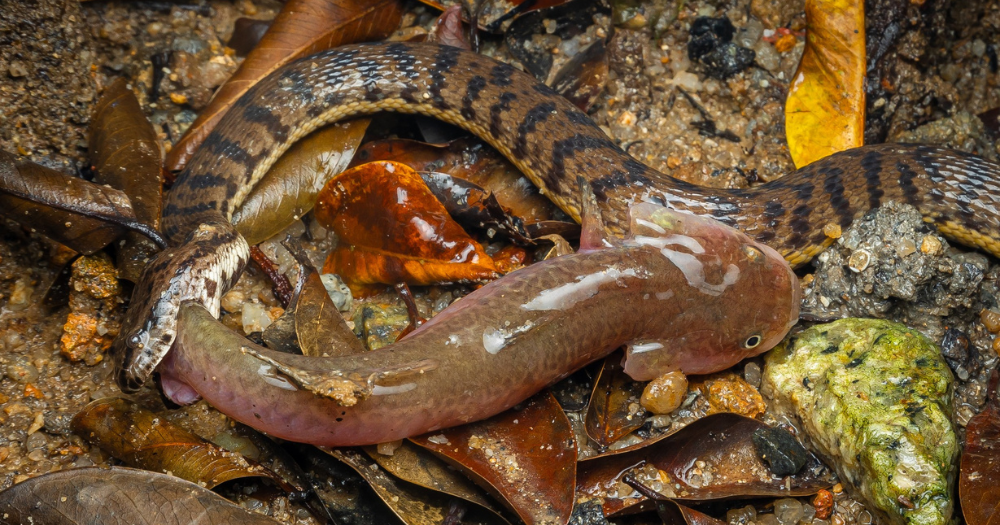One local photographer's encounter with a snake struggling with its catch turned out to be much more than the cool moment of predator versus prey he thought it was.
The photos J K Daryl Tan snapped of a dog-faced water snake with its jaws wrapped around a slimy fish became the first photographic evidence of the fish's existence in Singapore.
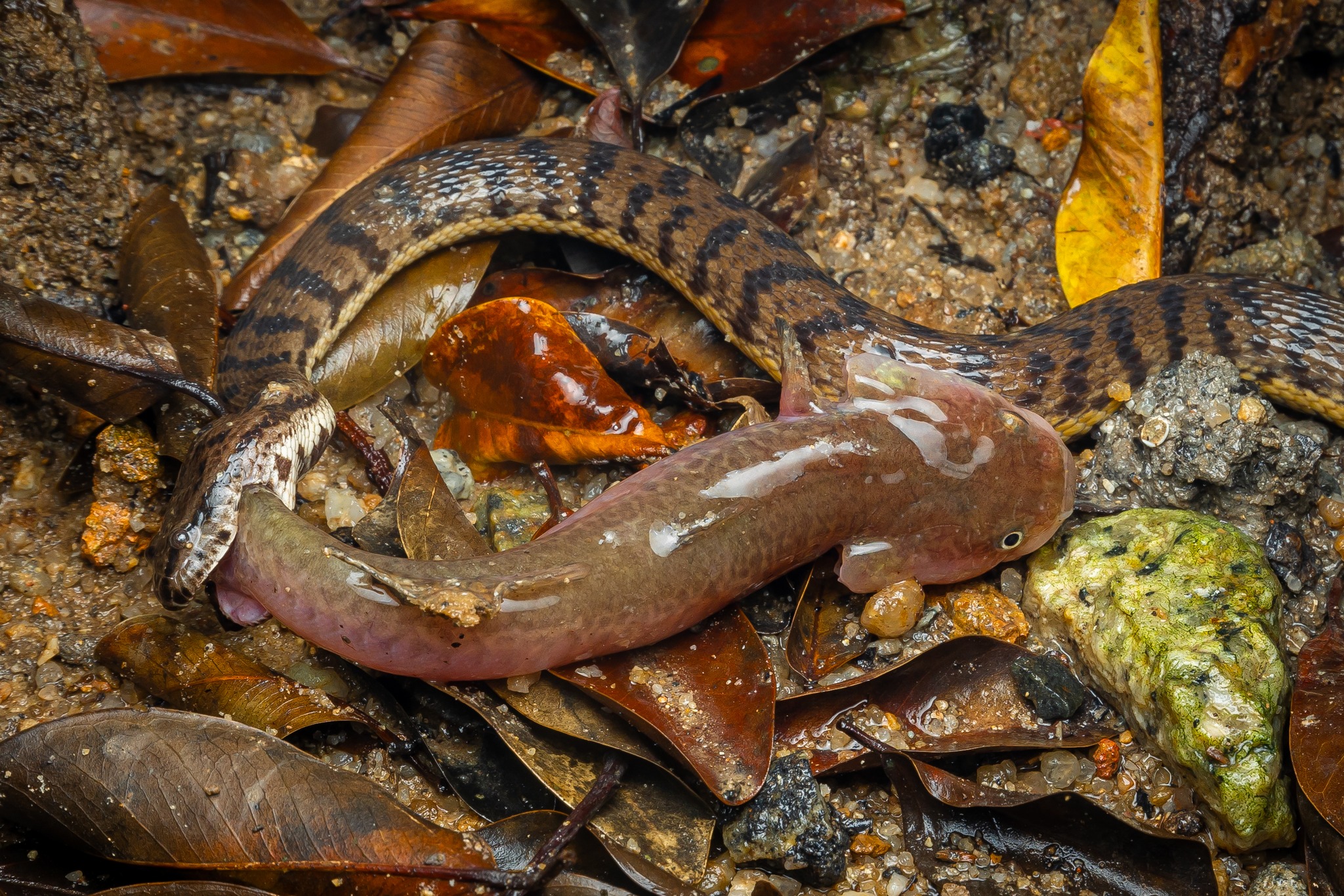 Photo courtesy of J K Daryl Tan
Photo courtesy of J K Daryl Tan
Speaking to Mothership, Tan shared that at the time, he did not realise the significance of his sighting, which occurred at Pasir Ris Park on Jun. 3, 2023.
"I was just fascinated by the predatory behaviour of the snake," Tan said.
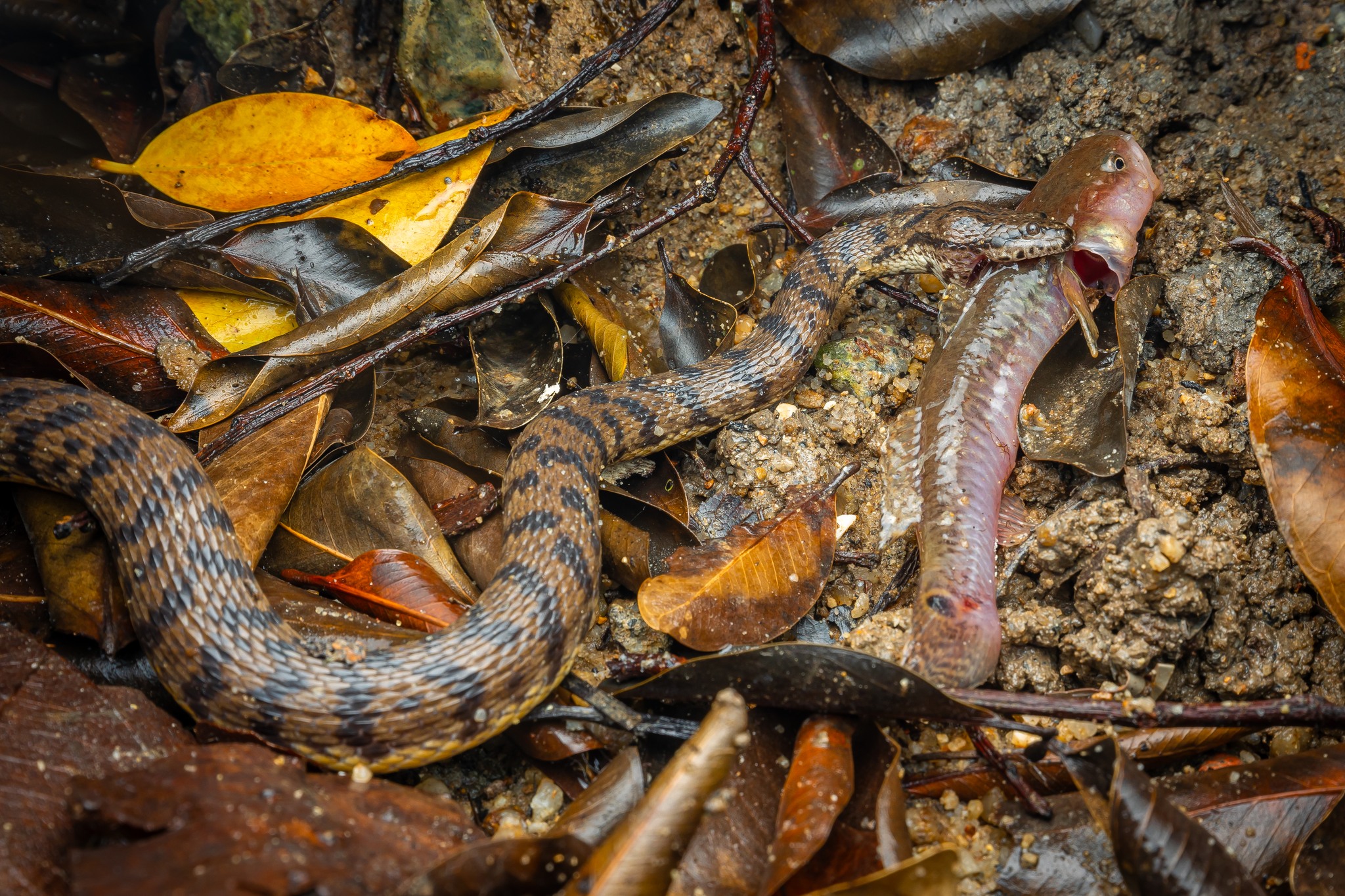 Photo courtesy of J K Daryl Tan
Photo courtesy of J K Daryl Tan
A biodiversity record published by the Lee Kong Chian Natural History Museum on Jan. 31, 2024, detailed Tan's observations.
"Out of the water and presumably affected by the venom that the snake was expected to have injected into it, the fish appeared to have weakened."
It appeared though, that the fish's head might have been a tad too big for the snake to ingest.
Tan observed that the snake fought to adjust its jaws over the fish's head for the next two hours, and was unable to grip its head securely.
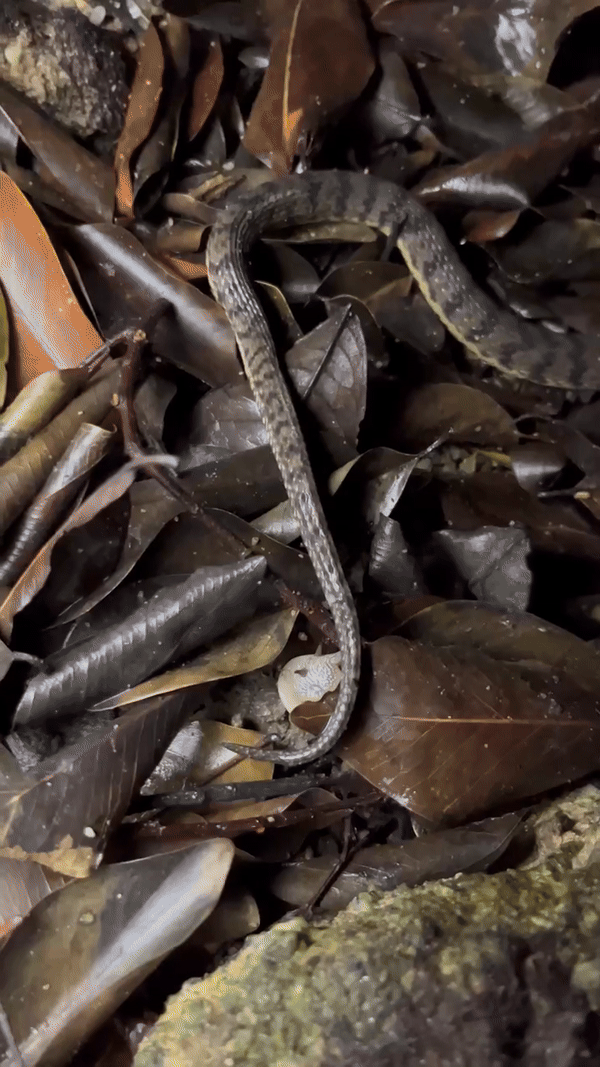 Video courtesy of J K Daryl Tan
Video courtesy of J K Daryl Tan
Tan eventually left the scene, and it is uncertain if the snake successfully consumed its meal.
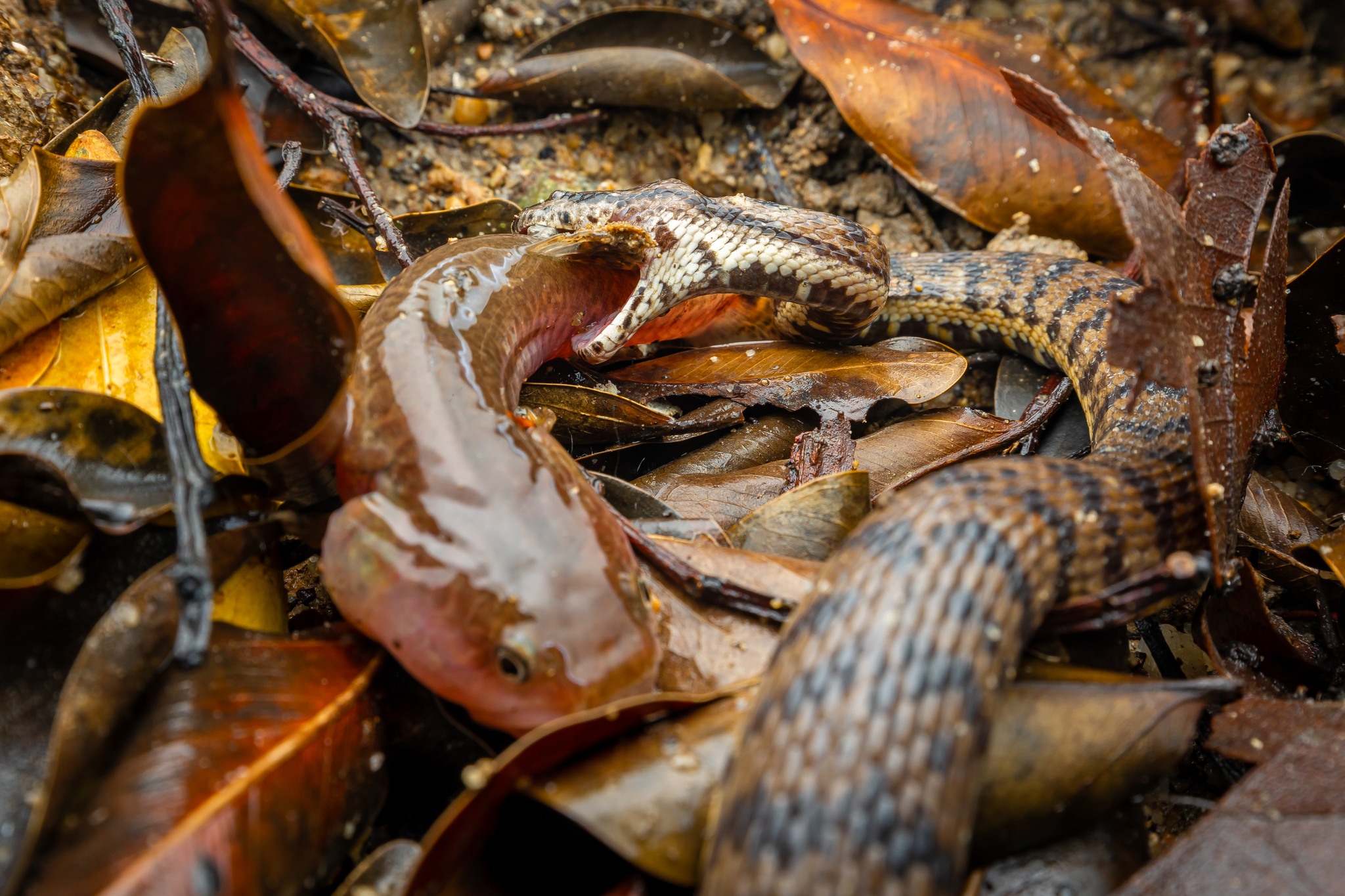 Photo courtesy of J K Daryl Tan
Photo courtesy of J K Daryl Tan
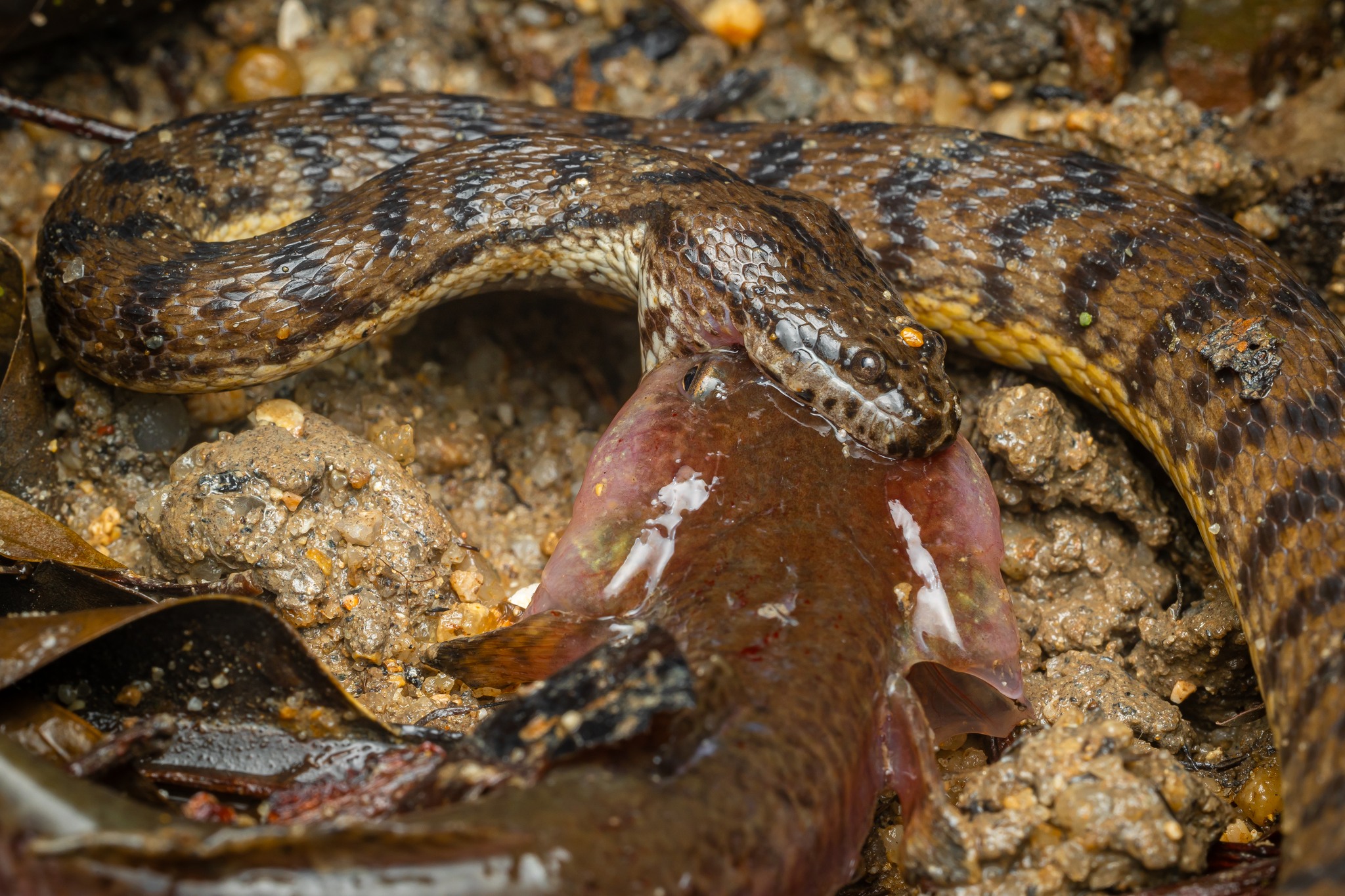 Photo courtesy of J K Daryl Tan
Photo courtesy of J K Daryl Tan
Previous record in Singapore was a 1800s watercolour painting
Tan only became aware of his "monumental discovery" when Lin Jiayuan contacted him.
Lin had come across Tan's photos, which were posted to his Instagram page, and identified the fish as a ladder gudgeon, a species presumed to be locally extinct.
The previous and only record of the species in Singapore was based on a watercolour painting by François-Louis Nompar de Caumont Laporte, a French naturalist, between 1858 and 1862.
However, as Lin puts it, species records through paintings often carry a certain amount of "dubiety".
This is because there is a chance that the observer, while painting the species from memory, misremembered some details of the species or drew them inaccurately.
"Such minute differences in illustrations may turn out to be significant hurdles when ichthyologists of today attempt to identify the subject of paintings from the past," Lin explained.
Significant discovery
The ladder gudgeon is described as a "very rare and little known" species in the biodiversity record, and the photos Tan snapped are reportedly the first photographic evidence, as well as the first definitive record, of the species in Singapore.
Lin is currently an undergraduate student at Nanyang Technological University (NTU) and has a keen interest in fishes and invertebrates. He told Mothership that he often reads papers about their taxonomy and ecology in his spare time.
He was able to identify the ladder gudgeon as it is an "extremely distinctive species" — it is the only species of gudgeon which has a large ocellus (spot) on the upper caudal peduncle (the base of the tail), and also pale vertical bars on the side of its body and dark markings on both its pectoral and caudal fins.
Lin subsequently confirmed his identification of the fish with Tan Heok Hui, an ichthyologist at the LKCNHM, and Kelvin Lim, the museum's curator of fishes.
"This is both a lucky and significant sighting. It highlights that Pasir Ris mangroves do offer a suitable habitat for these fish, and also gives us hope that species with similar habitat requirements and haven’t been seen in Singapore for decades may still live on somewhere," Lin said.
Typically found in mangroves
Lin shared that the ladder gudgeon is a rare species not only in Singapore but also in Southeast Asia.
Ladder gudgeons typically inhabit mangroves with brackish water. They are ambush predators that hide among vegetation along the banks or in small burrows made by other animals to prey on small invertebrates and fish.
Interestingly, one of Tan's photos showed a tiny fish inside the ladder gudgeon's gaping mouth.
He speculated that the gudgeon had just caught a meal before being predated on by the snake.
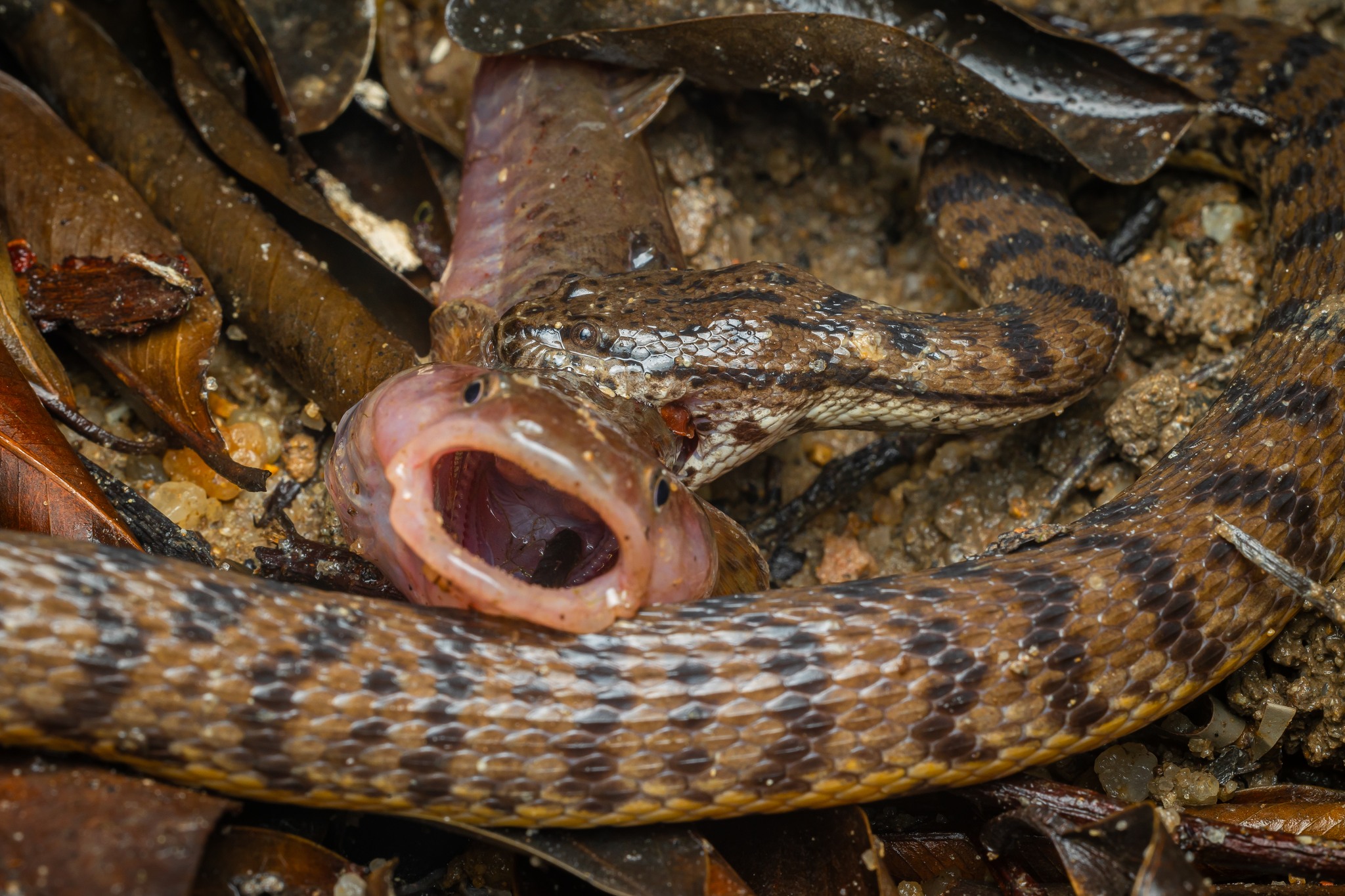 Photo courtesy of J K Daryl Tan
Photo courtesy of J K Daryl Tan
The species' preferred habitats are "rather scarce" in Singapore now due to the loss of the majority of the country's mangrove habitats, and also due to the damming of former rivers to form reservoirs, Lin said.
Although most of Singapore's remaining mangroves are protected in nature reserves (Sungei Buloh, for example), or in military or state land, these habitats might not provide the right conditions for species like the ladder gudgeon.
"It is possible that many species with similar habitat requirements, like the ladder gudgeon, silently died out as certain mangroves of the past offering the right conditions were cleared. It is also equally possible, however, that they survive on in Singapore in localities isolated from human activity," Lin posited.
More about dog-faced water snakes too
Dog-faced water snakes can be commonly seen in Singapore's mangroves and mudflats, and are most active at night.
The species is native to South and Southeast Asia, and preys mainly on fishes.
According to Wild Singapore, it is said that the dog-faced water snake "got its common name for its protruding eyes, which is rather unusual for a snake. Whether this makes the snake look dog-like is somewhat debatable".
Related stories
Top photo courtesy of J K Daryl Tan
If you like what you read, follow us on Facebook, Instagram, Twitter and Telegram to get the latest updates.

